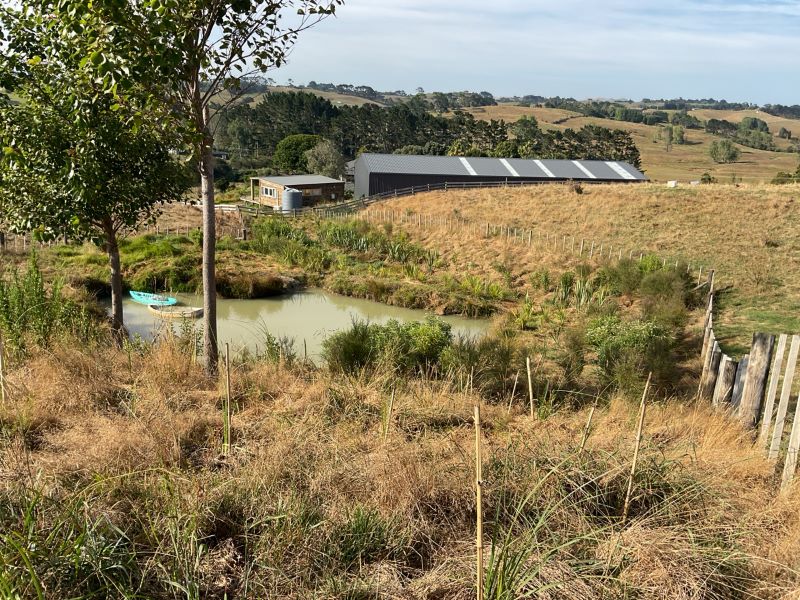|
Getting your Trinity Audio player ready...
|

On the Āwhitu Peninsula, a gully once choked with gorse and woolly nightshade as well as a
cattle-grazed coastal wetland, is being restored.
Situated behind the coastal edge and shell bank, it is also a dotterel breeding area in Binnies Bay. With the support of Regional Waterway Protection Fund (RWPF), the Devine family fenced the area, and joined forces with groups including Āwhitu Landcare, Te Korowai o Papatuanuku, Ngāti te Ata and Ministry for Environment’s Jobs for Nature programme.
Today, the restored wetland is a biodiversity haven, and the family has gained skills and
confidence for future conservation.
Greg Devine said it was a great project, with 7753 plants in the ground, 400m of waterways protected, 794m of fencing installed, and 3393 square metres of wetlands restored.
“We had amazing hands-on support from the council and the Landcare teams, as well as all
the family, friends and locals who turned up in numbers.
“There were many fantastic, fun-filled planting days that combined hard work, great food and company. The plants and memories will both be around for a long time.”
Further down the coast, protecting waterways on the Harris family farm in the
Waiuku/Āwhitu Manukau catchment meant more than ecological benefits — it was also
about honouring its cultural heritage.
Early in the project, Greta Harris consulted Ngāti te Ata kaumatua George Flavell and his son Lyall, discovering a historic waka tying-up post on their farm’s streambanks during planting preparation. The site, once a waka-building area and hapū garden, became a heritage restoration focus under Ngāti te Ata’s guidance.
The project began with fencing and planting to protect riparian areas, then later expanding to restore an inanga spawning site. Following restoration, eggs and fish were found in the first spawning season. As well as RWFP, support came from the Franklin Local Board, Āwhitu Landcare ‘Te Korowai o Papatuanuku,’ and Predator Free Franklin, with community
involvement from local schools and planting days.

The family’s efforts earned them the 2025 Auckland Region Ballance Farm Award for Water
Quality, with community involvement from local schools and planting days.
Greta Harris said they were initially nervous as they began the project but gained confidence due to the support of the RWPF team.
“They linked us into Āwhitu Landcare, Predator Free Franklin and in particular Terra Pura
who created our planting plan and advised us on how to release so many plants.”
She said the advice was tailored to their specific needs such as how to successfully establish plants for a salt-blown and windy site, which extended over three planting plans to create the thriving landscape there now.
“We now hold spotlighting evenings for our community several times a year with Mountains
to the Sea, finding freshwater species such as banded kōkopu, inanga and tuna. It’s brought together all ages to see what building ngahere looks like and the benefits from that.”
Now in its 10th year, the Auckland Council’s Regional Waterway Protection Fund (RWPF)
empowers landowners and communities to improve water quality and enhance biodiversity.
Applications for the fund close on July 27.
The RWPF focuses on two primary strategies:
- Fencing to prevent livestock from accessing waterways to reduce direct effluent
contamination and to reduce bank erosion and sediment loss. - Native planting to stabilise riparian zones, filter runoff, and cool water through shading
and improve aquatic habitats for native species.



